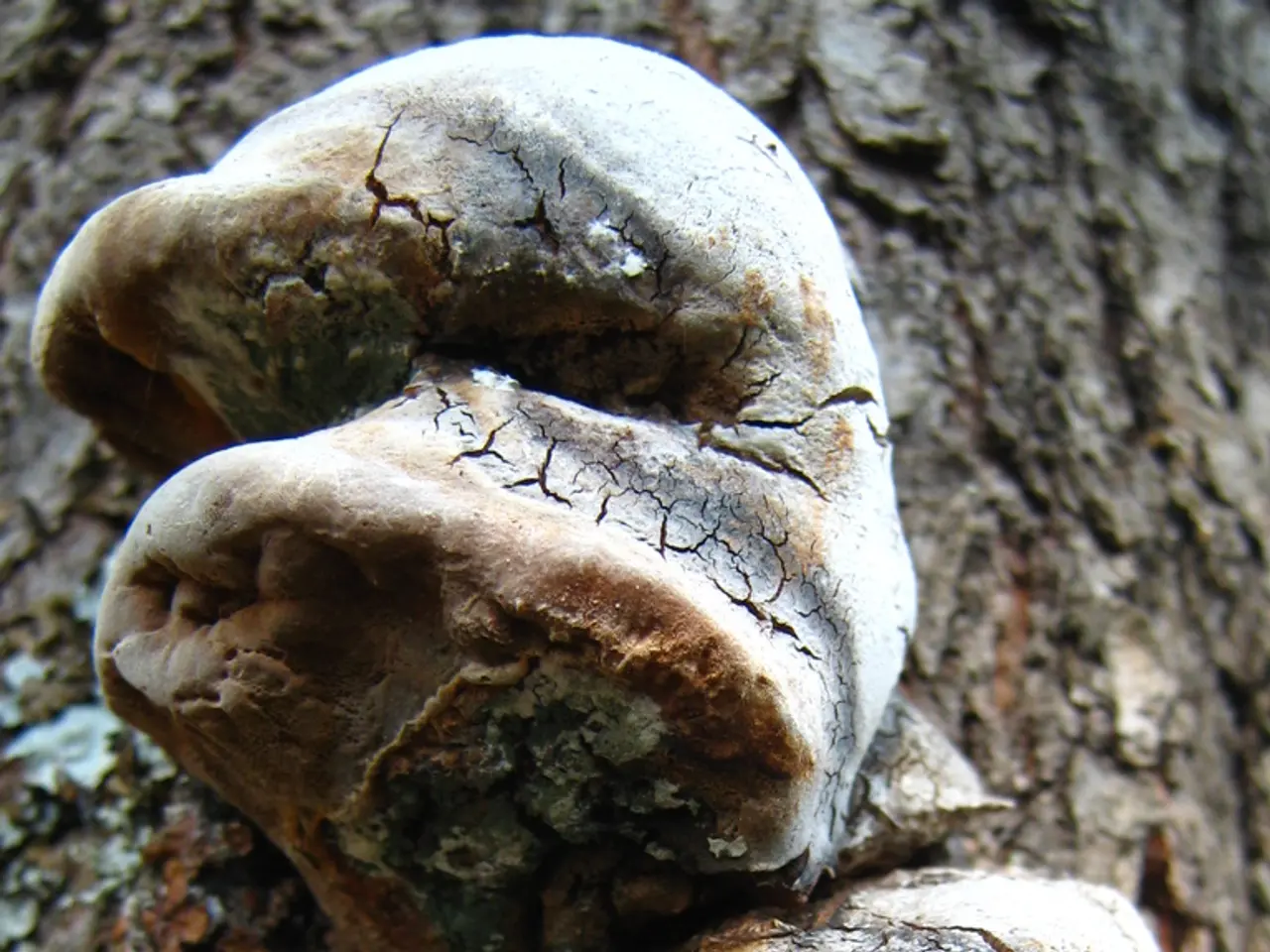Poison oak outbreak: Visual guides, signs, and remedies
In the lush, green landscapes of the Eastern and Southern United States, a common plant poses a potential health risk: Poison oak. This low shrub, characterised by fuzzy green leaves that appear in clusters of three, can cause an intensely itchy, blistering rash known as contact dermatitis.
The rash, caused by the plant's oil called urushiol, typically starts as red, swollen, and itchy streaks or patches on the skin where it has come into contact. Over time, these affected areas often develop into fluid-filled blisters, which may break open and release clear fluid. The rash can vary in intensity from mild redness to widespread blistering and swelling, sometimes with violet hues.
The onset of the rash usually occurs within a few hours to a few days after exposure, often appearing 1 to 3 days later, but the timing can be quicker with repeated exposures. It's essential to note that the rash itself is not contagious, but the plant's oil can spread to other parts of the body or to others if not properly washed off.
The duration of the rash typically resolves within 1 to 3 weeks without treatment, with itching and redness gradually subsiding as the rash heals. However, the severity of the reaction and how the rash is managed can influence this timeline.
Effective symptom management includes keeping the rash clean, avoiding scratching, and using anti-itch lotions or cool baths to ease discomfort. A wet compress, over-the-counter topical corticosteroids, lotions containing aluminum acetate, zinc carbonate, zinc oxide, or zinc acetate, soaking the rash in cool water, or taking a lukewarm bath containing colloidal oatmeal can also help soothe the rash and prevent it from getting worse.
To help prevent a poison oak rash, wearing clothing that covers the skin, using an ivy blocker, washing clothes, tools, and pets, showering after being outside, and avoiding burning or mowing the plant are recommended practices. If you come into contact with the plant, washing the skin immediately with dishwashing soap, laundry detergent, poison oak cleanser, rubbing alcohol, or rinsing with cool water can help prevent a rash from forming.
In cases of severe symptoms, such as swelling, difficulty breathing, or signs of infection, immediate medical attention is required. Employers must also take precautions to protect workers who come into contact with the poison oak oil by providing protective clothing, washing tools with rubbing alcohol or soap, and avoiding burning the plant.
Antihistamines can help alleviate the itching caused by a poison oak rash, but a doctor may prescribe oral or topical steroids or strong antihistamines for more severe cases. It's crucial to remember that other causes of rashes similar to poison oak include poison ivy, poison sumac, ringworm, psoriasis, and eczema.
In conclusion, understanding and managing poison oak rash involves being aware of the plant, taking preventive measures, and promptly addressing symptoms if they occur. By following these guidelines, you can minimise the discomfort and potential health risks associated with poison oak exposure.
- A common plant in the Eastern and Southern United States, Poison oak, can cause a rash known as atopic dermatitis, a type of skin-care issue.
- The rash, caused by the plant's oil called urushiol, typically starts as red, swollen, and itchy streaks or patches on the skin.
- Over time, these affected areas often develop into fluid-filled blisters, sometimes with violet hues, which may break open and release clear fluid.
- The onset of the rash usually occurs within a few hours to a few days after exposure, and it's essential to note that the rash itself is not contagious.
- Effective symptom management includes using a moisturizer and avoiding scratching to ease discomfort, or taking a lukewarm bath containing colloidal oatmeal to soothe the rash.
- To prevent a poison oak rash, practices such as wearing clothing that covers the skin, washing tools and pets, showering after being outside, and using an ivy blocker can help.
- In cases of severe symptoms, immediate medical attention may be required, with antihistamines or oral or topical steroids prescribed by a doctor for more severe cases.
- It's crucial to remember that other causes of rashes similar to poison oak include chronic diseases like eczema and mental-health conditions like psoriasis.
- Health-and-wellness advice includes being aware of the plant, taking preventive measures, and promptly addressing symptoms if they occur, as this can minimize the potential health risks associated with poison oak exposure.
- Additionally, employers must take precautions to protect workers who come into contact with the poison oak oil by providing protective clothing and washing tools with rubbing alcohol or soap.
- Moreover, research in predictive science indicates that unmanaged Poison oak exposure can lead to chronic diseases, such as diabetes, obesity, and even mental-health conditions like depression and Alzheimers.




